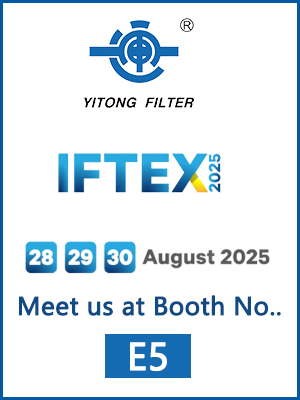Industrial waste water refers to waste water, sewage and waste liquid produced in industrial production process, which contains industrial production materials, intermediate products, by-products and pollutants produced in the production process with water loss. It is an important cause of environmental pollution, especially water pollution.
Waste water Treatment in Paper Industry
Paper making waste water mainly comes from the pulping and paper making process of the paper industry, with a large discharge. Paper making waste water is a kind of industrial waste water with complex composition, poor biodegradability and difficult treatment.
Paper industry waste water usually uses flotation method to recover fibrous solid substances in white water, combustion method to recover sodium salt in black water, neutralization method to adjust the pH value of waste water, coagulation sedimentation method to remove suspended substances in waste water, chemical precipitation method to decolorize, aerobic activation method. Sludge treatment and fungal treatment can usually achieve better results. In addition, reverse osmosis, ultra filtration and electrodialysis are also used.
Waste water Treatment in Food Industry
Food industry waste water has the characteristics of high content of organic matter and suspended matter, easy corruption and high toxicity. The main hazards are eutrophication of water bodies, resulting in the death of aquatic animals and fish, promoting the foul odor deposition of organic matter at the bottom of water bodies, deteriorating water quality and polluting the environment.
Waste water from food industry should be treated biologically. If the effluent quality is high or the organic matter content in waste water is high, two-stage aeration tank or two-stage biological filter, or multiple-stage biological rotary table, or combination of two biological treatment devices, or anaerobic-aerobic biological treatment system can be used.
The filters commonly used in industrial water treatment filters are: security filters, bag filters, bundle filters, ball filters and so on.
Water treatment filters can be classified into sewage treatment equipment, raw water treatment equipment, water purification equipment and filtration equipment. Like the following water treatment equipment: automatic dosing equipment, automatic water softener, mechanical filter, reverse osmosis equipment, pure water equipment, ultra-pure water equipment, bag filter, yellow rust water filter, fiber bundle filter, high-efficiency fiber ball filter, ceramic membrane filter, high-efficiency chemical deoiler, swimming pool circulating water place Complete sets of equipment, reverse osmosis water purification equipment, landscape water integrated water purification unit, reclaimed water treatment equipment, industrial water treatment equipment, sewage treatment equipment, are widely used in all walks of life in the domestic water treatment equipment.
1. Hardness and hardness: refers to some metal ions in water that are apt to form precipitates, usually calcium.
2. Clarifying water: water that removes suspended impurities from raw water.
3. Raw water: refers to untreated natural water or urban tap water, also known as raw water.
4. Turbidity and turbidity: refers to the degree of turbidity of water, which is caused by the optical effect of suspended substances (including colloidal substances) in water. Units are denoted by NTU. Turbidity is one of the main features in judging whether water is polluted in appearance. The standard unit of turbidity is defined as 1 mgSi02 turbidity.
5. Total alkalinity: refers to the total amount of substances in water that can neutralize strong acids.
6. Desalted water refers to water in which the cations and anions are basically removed or reduced to a certain extent. It is called desalted water. The desalting methods include distillation, electrodialysis, reverse osmosis and ion exchange.
7. Acidity and acidity: refers to the total amount of substances in water that can neutralize strong alkali.
8. Flocculant flocculant: agent that can cause coagulation and bridging of colloidal particles, magnesium ion content.
Sewage treatment is usually divided into three levels, and different levels of treatment have different water quality effects.
Primary treatment of sewage
Sewage primary treatment, also known as physical treatment of sewage, is a process of removing suspended matter from sewage, adjusting pH value and reducing the degree of decomposition of sewage by simple precipitation, filtration or appropriate aeration. The treatment can be composed of screening, gravity precipitation and flotation in series to remove most of the particulate matter with particle size over 100 microns in sewage. Screening can remove larger substances; gravity precipitation can remove inorganic particles and condensed organic particles with relative density greater than 1; flotation can remove particles with relative density less than 1 (oil, etc.). Wastewater after primary treatment generally still fails to meet the discharge standards.
Secondary treatment of sewage
The wastewater is further purified by first-stage treatment, then by aeration tank and sedimentation tank with activated sludge. Biological and flocculation methods are commonly used. Biological method is to treat sewage by microorganisms, mainly removing the organic matter in the primary treated sewage; flocculation method is to destroy the stability of colloidal particles by adding flocculants, so that colloidal particles flocculate and produce flocculants, which can adsorb, mainly removing inorganic suspended matter and colloidal particles or low in the primary treated sewage. Concentration of organic matter. The wastewater after secondary treatment can generally meet the requirements of agricultural irrigation water and wastewater discharge standards. However, under certain conditions, it may still cause pollution of natural water body.
Tertiary treatment of sewage
Three-stage treatment of wastewater is also called advanced treatment. After two-stage treatment of wastewater, the other pollutants (such as nitrogen, phosphorus, fine suspended matter, trace organic matter and inorganic salt) in wastewater are further removed.

Previous: None
Next: None

